
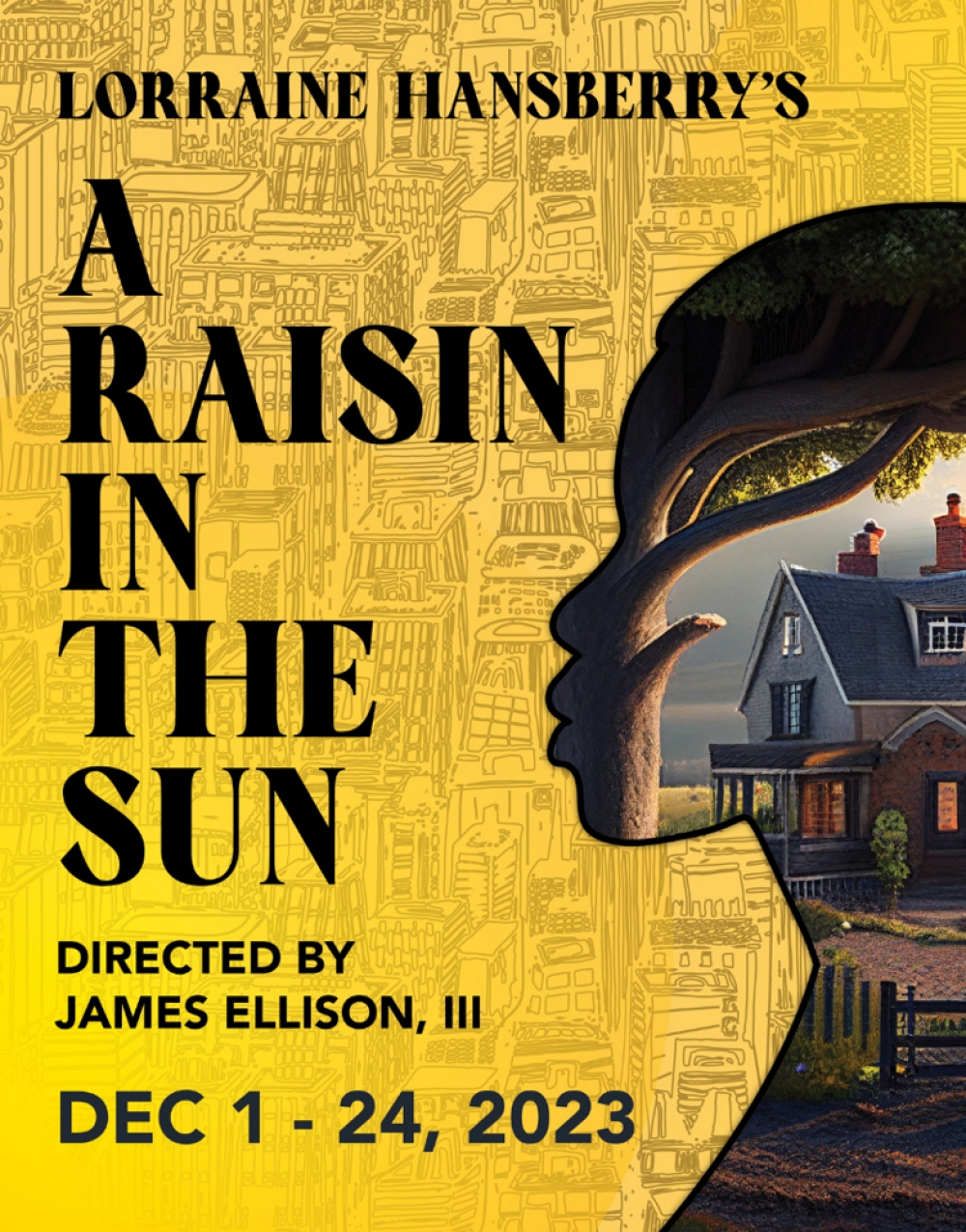
2023 Season "Overcoming"Celebration Arts Presents |
|||||
A RAISIN IN THE SUN |
|||||
| December 1 - 24, 2023 | |||||
|
Directed by |
|||||
|
Lorraine Hansberry |
Niyah Moore |
James Ellison III |
|||
|
|
|||||
|
|
|
|
|||
|
|
|
|
|||
|
|
|
|
|||
|
|
|
|
|||
|
|
|
|
|||
| PERFORMANCE LENGTH: 2 hrs, 45 mins. 15-minute intermission. | |||||
| Setting: The Youngers' apartment in the slums of Chicago's Southside, 1950s. |
|||||
Follow Us:

OUR MISSION
Celebration Arts is a multicultural and multiple-discipline organization whose purpose is to support the development and presentation of the performing arts, making art accessible to community residents through training and performance opportunities.
COVID-19 SAFETY
Masks are recommended, not required.
MOBILE PHONES + DEVICES
Please turn your phones off as you enter the theatre, prior to the performance.
VIDEOS + PHOTOGRAPHY
Photography, video, and recording devices are prohibited during the performance.
LATE ARRIVALS
As a courtesy to our performers and seated patrons, late arrivals will be seated in a suitable location by our ushers when it is least disruptive.
PARENTAL GUIDANCE
This play includes mature language and descriptions of racism. Use discretion with young children.
ACCESSIBILITY
Wheelchair seating is available. For any other accommodations, please contact the theater in advance at 916.455.2787.
Cast
Creative Team
James Ellison III
Niyah Moore
Helen Stallworth
Tony Parker
Gerry GOS Simpson
Production Team
Assistant Director
Niyah Moore
Stage Manager
Helen Stallworth
Set Design
Tony Parker
Costume Design
Gerry GOS Simpson
Assistant Stage Manager
Raheem Muhammad-Terrell
Lighting & Sound Technician
Denise Taylor
Box Office Manager
Rhonda Clark
Volunteer Coordinator
Voress Franklin
Marketing
Elizabeth Baidoo
Photography
Jonathan Martinez
Meet the Company
Sene Goss
 Sené (Suh-nay - "Gift from Above" - Eritrean) has lived up to her name her entire life. This Midwest native has been gracing stages with her God-given gifts for well over 30 years.
Sené (Suh-nay - "Gift from Above" - Eritrean) has lived up to her name her entire life. This Midwest native has been gracing stages with her God-given gifts for well over 30 years.
Her powerful yet mystic nature leaves people wanting more of her after just one experience. Sené is just that, more than a performer. She IS an experience; some would even call her an enigma.
Sené is so multifaceted as a singer, actress, model, etc... that one encounter with her, whether on or off stage, is guaranteed to leave you in a transformative state. Her voice, her presence, and her energy ALONE make her the powerhouse she is today.
When Sené isn't on stage healing the world through her beautiful gift of song, she is healing the world through her meditation coaching practice and sharing her story of survival from intimate partner abuse/ domestic violence.
This performance is full circle for Sené as her introduction to Sacramento theatre was in 1998 as (Althea) in "A Raisin In the Sun" the musical.
Since 2002, Celebration Arts has given Sené a home to always come back to when ready to dust her acting chops!
Sené dedicates this performance to her sons Tyler & Spencer and her parents for always being her greatest support system and seeing the greatness she sometimes cannot see in herself!
Favorite Quote: "Never be afraid to being, again."
Donald Lacy
 A RAISIN IN THE SUN is Donald Lacy's first role in a production at Celebration Arts. He is beyond excited to embody the character of Walter Lee Younger! Donald recently studied at Pacific Conservatory Theatre, where he fell in love with the role of Walter during a script analysis class and vowed to play him ever since. His first introduction to theatre was in 2017 when he played Orpheus in the show EURYDICE at Delta College. Since then, his favorite roles he has played are Bo Decker (BUS STOP), Mark Antony (JULIUS CAESAR), and Biff (DEATH OF A SALESMAN). It brings him no greater joy than to help close out the 2023 season at Celebration Arts. He wishes upon everyone who comes and supports peace, love, positivity, health, and wealth.
A RAISIN IN THE SUN is Donald Lacy's first role in a production at Celebration Arts. He is beyond excited to embody the character of Walter Lee Younger! Donald recently studied at Pacific Conservatory Theatre, where he fell in love with the role of Walter during a script analysis class and vowed to play him ever since. His first introduction to theatre was in 2017 when he played Orpheus in the show EURYDICE at Delta College. Since then, his favorite roles he has played are Bo Decker (BUS STOP), Mark Antony (JULIUS CAESAR), and Biff (DEATH OF A SALESMAN). It brings him no greater joy than to help close out the 2023 season at Celebration Arts. He wishes upon everyone who comes and supports peace, love, positivity, health, and wealth.
Jasmine Washington
 Jasmine Washington (she/her) is a theatre artist born, raised, and based in Sacramento, CA. Her most recent acting credits include Davis Repertory Theatre's GYNECOLOGOS (Ensemble) & THE WUI (Charlotte), Bike City Theatre Company's SANKOFA (Imani), and the DuSable Museum & Chicago International Puppet Festival's restaging of THE BLUEST EYE (Claudia). Jasmine also performed in Big Idea Theatre's THE REVOLUTIONISTS (Marianne), Thinner Than Water (Angela), and OTHELLO (Ensemble & Bianca's Understudy).
As a playwright, her work, CALLUS, was virtually produced by Art Rat Theatre, where she completed her first digital artist residency. Jasmine earned her Bachelor of Arts in Theatre and Dance at the University of California, Davis. Jasmine is ecstatic to make her Celebration Arts debut with such a powerful and classic play. She would like to thank James Ellison III and Celebration Arts for the opportunity and her loved ones for their continual support.
Jasmine Washington (she/her) is a theatre artist born, raised, and based in Sacramento, CA. Her most recent acting credits include Davis Repertory Theatre's GYNECOLOGOS (Ensemble) & THE WUI (Charlotte), Bike City Theatre Company's SANKOFA (Imani), and the DuSable Museum & Chicago International Puppet Festival's restaging of THE BLUEST EYE (Claudia). Jasmine also performed in Big Idea Theatre's THE REVOLUTIONISTS (Marianne), Thinner Than Water (Angela), and OTHELLO (Ensemble & Bianca's Understudy).
As a playwright, her work, CALLUS, was virtually produced by Art Rat Theatre, where she completed her first digital artist residency. Jasmine earned her Bachelor of Arts in Theatre and Dance at the University of California, Davis. Jasmine is ecstatic to make her Celebration Arts debut with such a powerful and classic play. She would like to thank James Ellison III and Celebration Arts for the opportunity and her loved ones for their continual support.
Tammie Denyse
 After a ten-year hiatus, Tammie Denyse is delighted to return to the stage and Celebration Arts. This is a full-circle moment for her, as A Raisin in the Sun was her theatrical debut in Sacramento more than 30 years ago. Tammie has performed in numerous shows at Celebration Arts: JAR THE FLOOR, TWILIGHT, STEEL MAGNOLIAS, and more. Her favorite roles include "Berniece" in THE PIANO LESSON and "Ozie" in the world premiere of DIRECT FROM DEATH ROW THE SCOTTSBORO BOYS at River Stage in Sacramento. Tammie is excited to work with James Ellison III in his directorial debut.
Tammie is the mother of three adult children and two of the cutest grand-loves ever. She is an ordained minister and Associate Minister at St. Andrews African Methodist Episcopal Church. She's also the Co-founder and President of Carrie's TOUCH Breast Cancer Organization.
Tammie dedicates this performance to her late sister, Lynne Marie Rankin-Cochran - her biggest fan and critic - and her late son, Tre' Alexander Howard.
After a ten-year hiatus, Tammie Denyse is delighted to return to the stage and Celebration Arts. This is a full-circle moment for her, as A Raisin in the Sun was her theatrical debut in Sacramento more than 30 years ago. Tammie has performed in numerous shows at Celebration Arts: JAR THE FLOOR, TWILIGHT, STEEL MAGNOLIAS, and more. Her favorite roles include "Berniece" in THE PIANO LESSON and "Ozie" in the world premiere of DIRECT FROM DEATH ROW THE SCOTTSBORO BOYS at River Stage in Sacramento. Tammie is excited to work with James Ellison III in his directorial debut.
Tammie is the mother of three adult children and two of the cutest grand-loves ever. She is an ordained minister and Associate Minister at St. Andrews African Methodist Episcopal Church. She's also the Co-founder and President of Carrie's TOUCH Breast Cancer Organization.
Tammie dedicates this performance to her late sister, Lynne Marie Rankin-Cochran - her biggest fan and critic - and her late son, Tre' Alexander Howard.
Alex Richardson
 Alex appeared last in THE ROYALE as Fish at Capital Stage last Fall. This play will serve as his return to Celebration Arts, as you may have seen him in A SOLDIER'S PLAY as Corporal Cobb in 2019. In addition, he would like to thank and is grateful for his extremely talented fellow cast members, his director, and the crew members at Celebration Arts who work tirelessly.
Alex appeared last in THE ROYALE as Fish at Capital Stage last Fall. This play will serve as his return to Celebration Arts, as you may have seen him in A SOLDIER'S PLAY as Corporal Cobb in 2019. In addition, he would like to thank and is grateful for his extremely talented fellow cast members, his director, and the crew members at Celebration Arts who work tirelessly.
Elaine Lenae Douglas
 Elaine Douglas has been a part of the Celebration Arts Family for over fifteen years as a resident artist and board member. For thirty years, she has performed at various Sacramento community, educational, and professional theater venues. Ms. Douglas particularly enjoys being in the seasonal and musical productions at Celebration Arts. She appeared in THE AMEN, MAHALIA, and DON'T SING THE G WORD.
She was featured as a soloist, musician, and assistant director in three seasons of BLACK NATIVITY. Ms. Douglas is a double-major undergraduate of UC Berkeley in Sociology and Ethnic Studies, has a Theater Arts minor, a master's degree from Cambridge, MA, focused on art integration in school curriculum, and is a certified specialist in children's theater.
Douglas is a retired high school teacher/elementary school principal. Ms. Douglas is the Kids' Time program coordinator at Celebration Arts.
Elaine Douglas has been a part of the Celebration Arts Family for over fifteen years as a resident artist and board member. For thirty years, she has performed at various Sacramento community, educational, and professional theater venues. Ms. Douglas particularly enjoys being in the seasonal and musical productions at Celebration Arts. She appeared in THE AMEN, MAHALIA, and DON'T SING THE G WORD.
She was featured as a soloist, musician, and assistant director in three seasons of BLACK NATIVITY. Ms. Douglas is a double-major undergraduate of UC Berkeley in Sociology and Ethnic Studies, has a Theater Arts minor, a master's degree from Cambridge, MA, focused on art integration in school curriculum, and is a certified specialist in children's theater.
Douglas is a retired high school teacher/elementary school principal. Ms. Douglas is the Kids' Time program coordinator at Celebration Arts.
Tylre Allen
 Tylre started acting at the age of 20 at the Los Angeles City Theatre Academy, receiving his acting certificate and then moving on to film school in 2011. He has made a film in Africa and acted in other
stage plays, including DIRECT FROM DEATH ROW - THE SCOTTSBORO BOYS and PIPELINE at Celebration Arts. He continues working as an actor and is excited about new opportunities.
Tylre started acting at the age of 20 at the Los Angeles City Theatre Academy, receiving his acting certificate and then moving on to film school in 2011. He has made a film in Africa and acted in other
stage plays, including DIRECT FROM DEATH ROW - THE SCOTTSBORO BOYS and PIPELINE at Celebration Arts. He continues working as an actor and is excited about new opportunities.
Todd Lubitsch
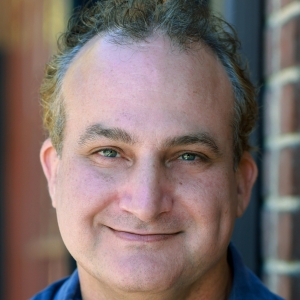 Todd Lubitsch is thrilled to make his Celebration Arts debut. Recent theatre credits include Michele in MURDER ON THE ORIENT EXPRESS (STC), Gonzalo in THE TEMPEST (Falcon's Eye Theatre), Marquis in EMILIE LA MARQUISE DU CHATELET DEFENDS HER LIFE TONIGHT (Stage at Burke Junction), Banquo in BANQUO'S ISSUE (Big Idea Theatre). Film roles: THE CHRISTMAS TAPES, THE FILM.
Previous television roles include I'M DYING UP HERE (Showtime) and THE WEDDING BAND (TBS). And dozens of commercials.
Todd received his acting degree from Emerson College. He recently moved to Sacramento from LA, where he did primarily on-camera work.
He's so happy to rediscover the magic of live theatre. Todd thanks his wife for her support. As for his children, being their dad is his greatest role. More information about Todd can be found here and here.
Todd Lubitsch is thrilled to make his Celebration Arts debut. Recent theatre credits include Michele in MURDER ON THE ORIENT EXPRESS (STC), Gonzalo in THE TEMPEST (Falcon's Eye Theatre), Marquis in EMILIE LA MARQUISE DU CHATELET DEFENDS HER LIFE TONIGHT (Stage at Burke Junction), Banquo in BANQUO'S ISSUE (Big Idea Theatre). Film roles: THE CHRISTMAS TAPES, THE FILM.
Previous television roles include I'M DYING UP HERE (Showtime) and THE WEDDING BAND (TBS). And dozens of commercials.
Todd received his acting degree from Emerson College. He recently moved to Sacramento from LA, where he did primarily on-camera work.
He's so happy to rediscover the magic of live theatre. Todd thanks his wife for her support. As for his children, being their dad is his greatest role. More information about Todd can be found here and here.
Howie Bryant
 Making his second Celebration Arts appearance, Howie also appeared in DIRECT FROM DEATH ROW - THE SCOTTSBORO BOYS earlier this season. He began performing in the Grant High School drama program.
He continued his acting studies at American River College and Mayville State University, as well as studying comedy at the Sacramento Comedy Spot and The Groundlings.
Howie has appeared in DEAD TONE, THE CAGE and starred in the USC Student film Socialess. Howie is also a recording artist and releases music under the moniker Don Creeper.
Making his second Celebration Arts appearance, Howie also appeared in DIRECT FROM DEATH ROW - THE SCOTTSBORO BOYS earlier this season. He began performing in the Grant High School drama program.
He continued his acting studies at American River College and Mayville State University, as well as studying comedy at the Sacramento Comedy Spot and The Groundlings.
Howie has appeared in DEAD TONE, THE CAGE and starred in the USC Student film Socialess. Howie is also a recording artist and releases music under the moniker Don Creeper.
Elton Mitchell
 Elton Eliseo Frank Mitchell plays the role of Travis Younger in A RAISIN IN THE SUN. In the summer of 2023, he was part of the Celebration Arts Kids' Time theatre camp, performing the poem "I Too Am America." Elton has also performed for the National Council of Negro Women in 2023.
He is in the fifth grade, and when not acting, he likes dirt biking and playing video games.
Elton Eliseo Frank Mitchell plays the role of Travis Younger in A RAISIN IN THE SUN. In the summer of 2023, he was part of the Celebration Arts Kids' Time theatre camp, performing the poem "I Too Am America." Elton has also performed for the National Council of Negro Women in 2023.
He is in the fifth grade, and when not acting, he likes dirt biking and playing video games.
Spencer Goss
 Spencer Goss is an 11-year old Sacramento native and makes his acting debut with Celebration Arts as Travis Younger. Spencer is a self-taught pianist, drummer, and bass/guitar player. He has watched his mother, Sené Goss, do this work his entire life, but his amazing personality makes him a natural.
While Spencer is no stranger to the world of acting and entertainment, he will take the stage for the first time in his young life, step into the spotlight alongside his mother, and blaze a trail in the acting world that is all his own.
Welcome, and receive Spencer Goss. Remember that name. It won't be the last time you hear of it.
Spencer Goss is an 11-year old Sacramento native and makes his acting debut with Celebration Arts as Travis Younger. Spencer is a self-taught pianist, drummer, and bass/guitar player. He has watched his mother, Sené Goss, do this work his entire life, but his amazing personality makes him a natural.
While Spencer is no stranger to the world of acting and entertainment, he will take the stage for the first time in his young life, step into the spotlight alongside his mother, and blaze a trail in the acting world that is all his own.
Welcome, and receive Spencer Goss. Remember that name. It won't be the last time you hear of it.
Maasai Mack
 Maasai Ameer Mack is playing the role of Travis. Maasai performed as part of the Celebration Arts Kids' Time theatre camp in the summer of 2023 and the B Street Theater camp in 2022. Maasai is in the 2nd grade at Brookfield School, where he participates in various school plays. In his spare time, Maasai enjoys playing with dinosaurs and collecting crystals.
Maasai Ameer Mack is playing the role of Travis. Maasai performed as part of the Celebration Arts Kids' Time theatre camp in the summer of 2023 and the B Street Theater camp in 2022. Maasai is in the 2nd grade at Brookfield School, where he participates in various school plays. In his spare time, Maasai enjoys playing with dinosaurs and collecting crystals.
James Ellison III

James Ellison III makes his directorial debut with A RAISIN IN THE SUN, the final production of our 2023 Season, "Overcoming." Fresh from an incredible run as Thurgood Marshall in the one-person show THURGOOD, Ellison is a long-time actor, volunteer, and board member with Celebration Arts. He has been serving as the theatre's Artistic Director since December 2022.
A stage, television, and film veteran, Ellison has acted in productions throughout California ranging from community theater to professional productions.
A long-time visual and performing arts advocate, Ellison has been part of the Celebration Arts family for over 20 years, beginning with a 1 AM phone call with founder James Wheatley when he was 19.
Niyah Moore
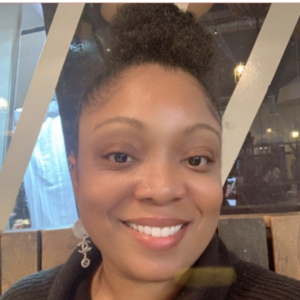
A Sacramento native, Niyah Moore is an award-winning author with 50 published works. A mother of four, she is also a director, screenwriter, and playwright, preparing to bring her first play adapted from one of her novels, MAJOR JAZZ, to the stage this spring at Cosumnes River College.
Helen Stallworth
 Helen Stallworth's greatest gifts in life are her three children, LeAndre, Christina, and Elijah.
Helen Stallworth's greatest gifts in life are her three children, LeAndre, Christina, and Elijah.
Helen kicked off the 2023 Celebration Arts season as Stage Manager for DIRECT FROM DEATH ROW - THE SCOTTSBORO BOYS at the Guild Theatre - the second time she experienced the play. The first experience was in 2000 when she played the role of Eugene at River Stage.
Helen has stage-managed and directed many plays since high school across states like Texas and Alabama, where she once resided. Helen studied Theatre and Dance at Sacramento State University, receiving a BFA. While attending Sac State, she danced with Sacramento Black Art of Dance from 2001-2008 under the direction of Dr. Linda Goodrich.
She is currently a Program Specialist for the VA. For fun, Helen volunteers with local churches, schools, and other community organizations across the US. She is happy to close out the 2023 season at Celebration Arts, making history with James Ellison in his directorial debut.
Tony Parker

Tony hails from Stockton, CA and received his BA in Theater Arts at UC Santa Cruz, where his focus was on design and theater history. He stepped into the Sacramento arts scene working at Capital Stage as an apprentice. Tony as designed for shows such as ROCKY HORROR, BAREFOOT IN THE PARK, and several Big Idea Theatre productions such as SMALL MOUTH SOUNDS, TWELFTH NIGHT, and AFTER THE BLAST. Tony’s artistic inspirations include set designers Beowulf Boritt, Mimi Lien, and Prof. Kate Edmunds.
Gerry GOS Simpson

Gerry Simpson also known as GOS is very much involved with the arts. His experi- ence includes being a Visual Merchandising Manager, Stylist and Production Manager for Nordstrom. He has been a Professor at American River College teaching Visual Merchandising, Fashion Promotion, and Introduction To Fashion Design. He has created brilliantly colored paintings in the Sacramento region for nearly 25 years. Simpson spends some of his time designing fashion and using his camera to take images of people, places and interesting things.
Photos

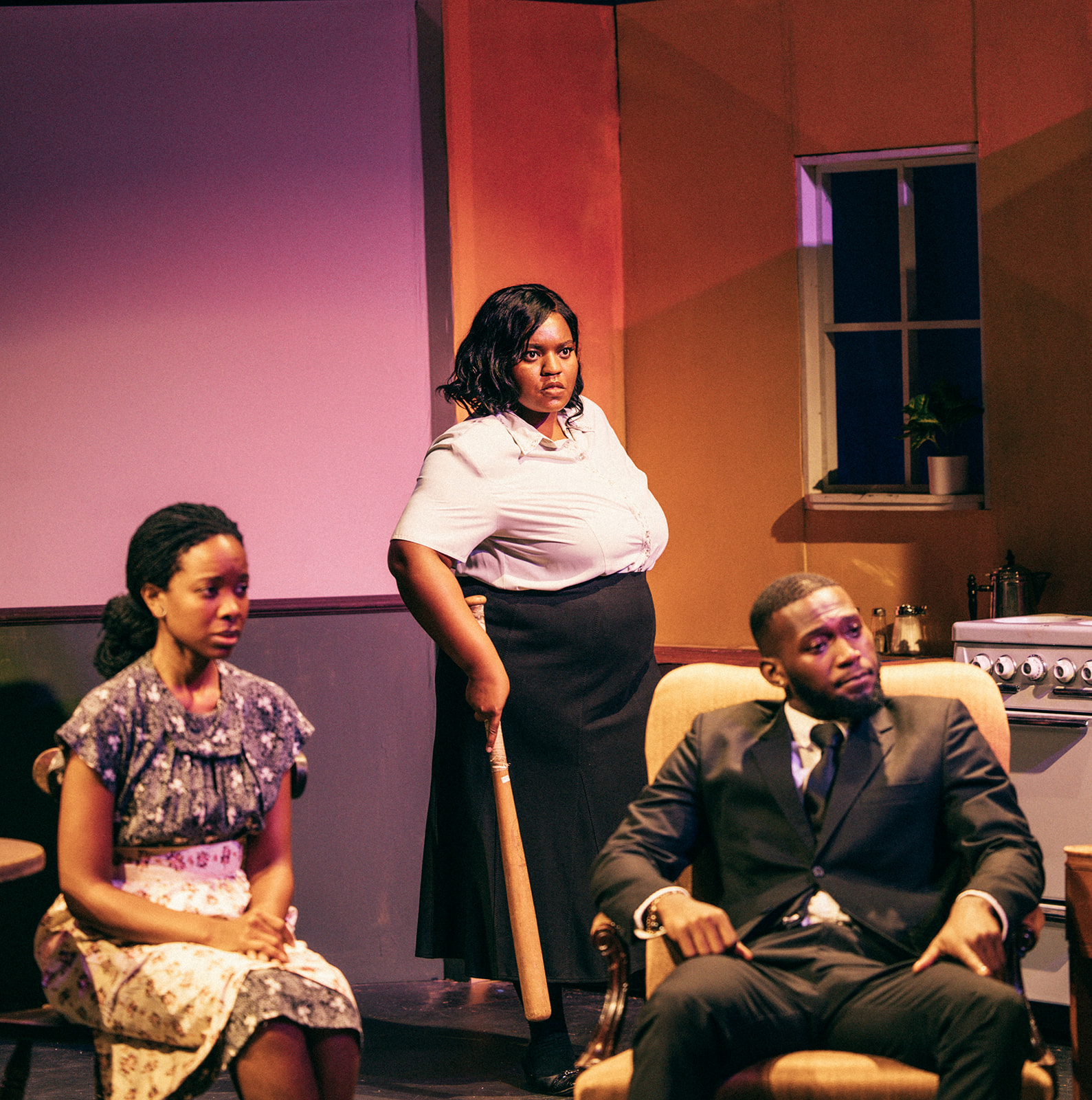
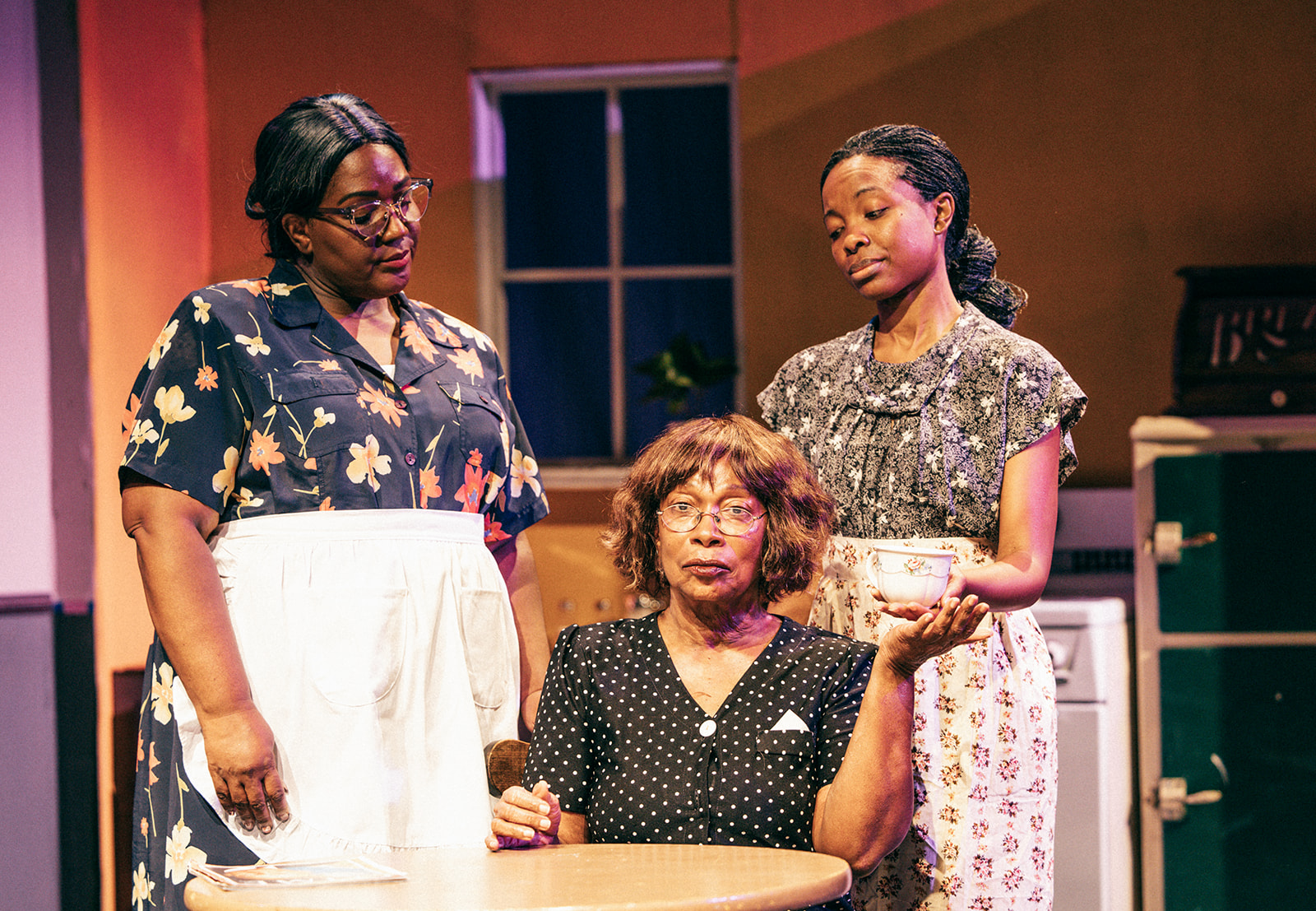




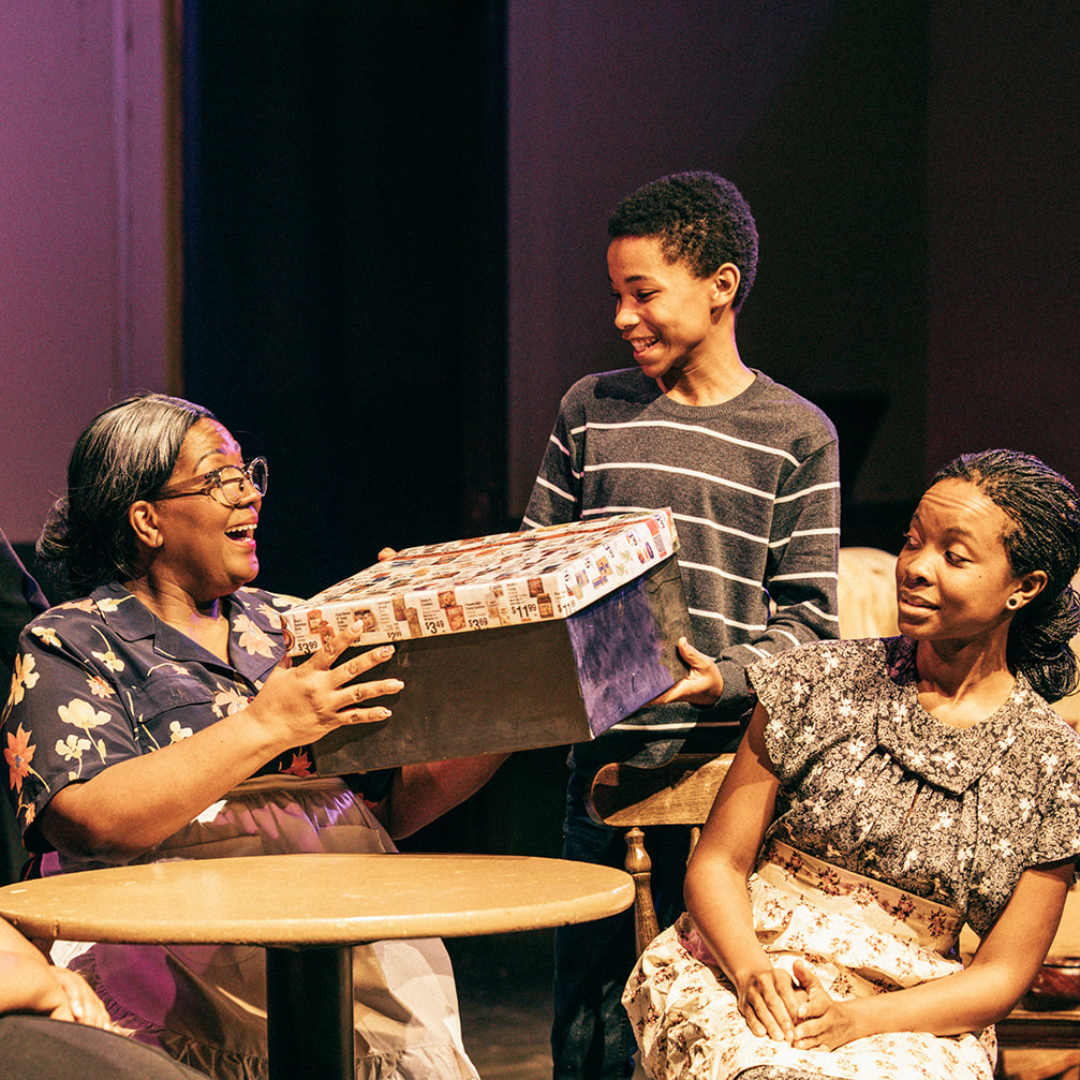

About Lorraine Hansberry, Playwright
In 1959, Lorraine Hansberry (1930-1965) made history as the first African-American woman to have a show produced on Broadway—A RAISIN IN THE SUN.
As a playwright, feminist, and racial justice activist, Hansberry never shied away from tough topics during her short and extraordinary life.
Growing up on the South Side of Chicago, Hansberry and her family were involved in the racial justice movements of the era.
When prominent African American community members and leaders came through Chicago, they went to the Hansberry's home. The family hosted W.E.B. DuBois, Paul Robeson, Langston Hughes, Duke Ellington, and Jesse Owens.
In 1937, Hansberry's parents challenged Chicago's restrictive housing covenants by moving into an all-white neighborhood. Their new white neighbors did not welcome the move, and a mob gathered around the house. Someone threw a brick through the window, barely missing eight-year-old Hansberry's head.
When the Supreme Court of Illinois upheld the legality of the neighborhood's restrictive covenant and forced the Hansberrys to leave the house, her parents sued. They took their case to the Supreme Court. They won! Hansberry v. Lee (1940) helped outlaw legal housing discrimination across the United States.
Inspired by her childhood and love of theater, she started writing a play. Initially called The Crystal Stair, she retitled it A RAISIN IN THE SUN, a phrase from Langston Hughes's poem, "Harlem: A Dream Deferred." Raisin drew upon the lives of working-class African Americans who rented houses from her father and whom Hansberry went to school with on the South Side. She turned to family members for inspiration for other characters.
Many expected A RAISIN IN THE SUN to flop when it came to Broadway. Instead, it ran for 19 months, was made into a 1961 movie starring Sidney Poitier, and is now considered a classic theater piece. The play was nominated for four Tony Awards and won the New York Drama Critics' Circle Award for best play in 1959. Most importantly, Raisin brought African Americans to the theater as audiences and gave them representation on the stage.
Essay
The American Dream & Housing Inequality in
Lorraine Hansberry’s A RAISIN IN THE SUN
Halifu Osumare, Ph.D.
Today, Black families’ wealth is only one-tenth of white families nationally. So, I ask how much has changed since 1959 when Lorraine Hansberry’s play A Raisin in the Sun, with its themes of the American Dream and housing inequality, first premiered on Broadway? This is a question we need to ask ourselves regarding the harsh statistics of race and class in the U.S. Today, white families account for 84% of the wealth, whereas Black families account for 4% of U.S. wealth; white workers are about 50% more likely than workers of color to hold good sustainable jobs, and much less likely to be displaced from their jobs by automation.
One of El-Hajj Malik Shabazz’s (Malcolm X) televised statements regarding the historical structural and overt racism heaved on Black Americans was the following:
If you stick a knife in my back nine inches and pull it out six inches, that’s not progress. If you pull it all the way out, that’s not progress. The progress comes from healing the wound that the blow made. They haven’t even begun to pull the knife out…they won’t even admit the knife is there. [1]
This statement offers a vivid picture of the cause of the racial wealth gap. Even when laws are enacted to ameliorate historic inequalities, the U.S. still does not address the original wound that the metaphoric “knife” created. This is why home ownership and affordable rental units remain difficult for the Black community.
As urban America developed, the housing system historically discriminated against Black people. In 1932, Franklin Delano Roosevelt’s New Deal, enacted during the Great Depression, established the Federal Housing Administration (FHA). Its statutes explicitly stated that Black homebuyers had to be kept out of those new communities to preserve the value of newly constructed housing subdivisions. The FHA’s guidelines recommended race restrictions for new suburban developments. Those rules are no longer enforceable or legal, but many remain on the books, established 90 years ago.
By the 1950s, the period of A Raisin in the Sun, federal policy and private discrimination left few options for Black Americans. In the play, the only white character, Karl Lindner, of the Clybourne Park Improvement Association, offers the Youngers a bribe NOT to move into the white suburb. After he leaves the Southside tenement apartment, Walter Lee sarcastically quips to his family, “He said the one thing they don’t have, that they are just dying to have out there is a fine family of fine colored people!” The Youngers were NOT welcome, and that was the norm in the 1950s.
The big question: is this still the case today in 2023? A December 2022 Sacramento Observer article states, “The dream of affordability is escaping Sacramento’s Black residents. Homeownership rates have largely declined for the past 15 years, while rental prices have increased.” This decline is apparent when one considers in 2021, Black ownership in Sacramento was 34%, while in 2006 it was 45%. Keisha Mathews, a Sacramento real estate agent, says, “Homeownership affordability in Sacramento has been difficult for African Americans. Many of my clients have not been able to qualify for asking prices.”[2]
Besides the racial wealth gap and affordability, structural racism is another reason for declining Black home ownership. Federal agencies continue to map racial housing segregation, known as “redlining.” During the New Deal, municipal maps were color-coded by the Home Owners Loan Corporation and the Federal Housing Administration. The color codes were designed to indicate where it was supposed to be safe to insure mortgages. Districts where African Americans lived or anywhere nearby were colored red to inform appraisers that those neighborhoods were too risky to insure mortgages.
But does redlining still exist today? Although the 1968 Fair Housing Act and the 1977 Community Reinvestment Act (CRA) banned discrimination based on someone’s race when trying to rent or buy a house, today, there is “reverse redlining.” Today, banks sometimes engage in predatory lending in the neighborhoods once marked off limits for borrowers. This is precisely what happened in bank lending, leading to the 2008 housing crash. Mortgage lenders made thousands of risky subprime loans to low-income borrowers, and you can be sure many of them were Black Americans.
Another form of housing discrimination is the covenants of homeowners associations (HOAs). During the New Deal era, the Federal Housing Administration explicitly recommended that race restrictions be used in new suburban developments. This is exactly what we see in “A Raisin in the Sun” with the Clybourne Neighborhood Improvement Association trying to keep the Youngers from moving into their neighborhood. This historical fact is responsible for much of the contemporary pattern of segregated neighborhoods in U.S. cities.
Homeowners associations can still discriminate against prospective homeowners. They enforce requirements that disproportionately exclude people of color, requiring minimum credit scores, conducting background checks, and charging high fees. Some HOAs have attempted to prevent homeowners from renting to households that receive federal housing assistance, which has a high percentage of people of color. Hence, the housing inequality issue at the center of “Raisin,” as the Younger family tries to access some semblance of the American Dream, is still with us in the 21st century. We must continue to resist, fight back, and expose these inequalities wherever they happen.
In “A Raisin in the Sun,” Lena Younger’s struggling potted plant that she insists on keeping symbolizes her tenacity and resilience. She holds onto the American Dream, hoping to eventually escape their poverty-stricken life. The plant also represents the dream of African-American equality in the general culture. But I ask, has the White American Dream become the Black Nightmare? What I know for sure is that Mama Younger holding onto her dream is as important as the realization of the dream.
[1] Malcolm X, television interview, March 1964, Malcolm X at Dr. Betty Shabazz Memorial and Educational Center.
[2] Celene Talavera and Will Smith-Moore, “Homeownership Slipping Form Black Sacramentans’ Reach,” Sacramento Observer, December 9, 2022, 3.
ABOUT CELEBRATION ARTS
Originally the Celebration Dance Company founded in 1976 by James Wheatley, Celebration Arts became a 501c3 organization in 1986. For more than 30 years, Celebration Arts continues to be a cornerstone of music, dance, and theater for the Sacramento region’s African American community bringing Black artists and stories to its stage at 2727 B Street. In addition, Celebration Arts provides educational programs to children through Kids’ Time and dance training for teens, adults, and seniors. More information can be found at celebrationarts.net.
James Wheatley
Founder
BOARD OF DIRECTORS
Nicole Manker
Interim President
Executive Director
Kelly McDole
Vice President
Interim Treasurer
Voress Franklin
Secretary
James Ellison III
Artistic Director
Production Manager
Halifu Osumare, PhD
Development Advisor
Samuel Jenkins
Building + Facilities Advisor
Linda Goodrich, PhD
Leave of Absence
Karen "KT" Travis
Leave of Absence
Elaine Douglas
Emeritus Advisor
Sponsors

Donate
Celebration Arts cannot exist without the generous support of our donors. As a volunteer-run organization for more than 36 years, all proceeds from ticket sales are applied towards operational costs to produce shows and keep our doors open. Unfortunately tickets sales do not come close to covering these expenses.
We are dependent on your generosity to continue bringing theatrical productions and educational opportunities to our community. Contributions of any amount make a significant impact to the livelihood of our theater from helping us pay our rent and upkeep of our facilities, to giving small stipends to our performers and helping us spread the word to attract patrons to the theater.
Thank you so much for your support!
Donate here:
https://www.paypal.com/fundraiser/charity/1607405
